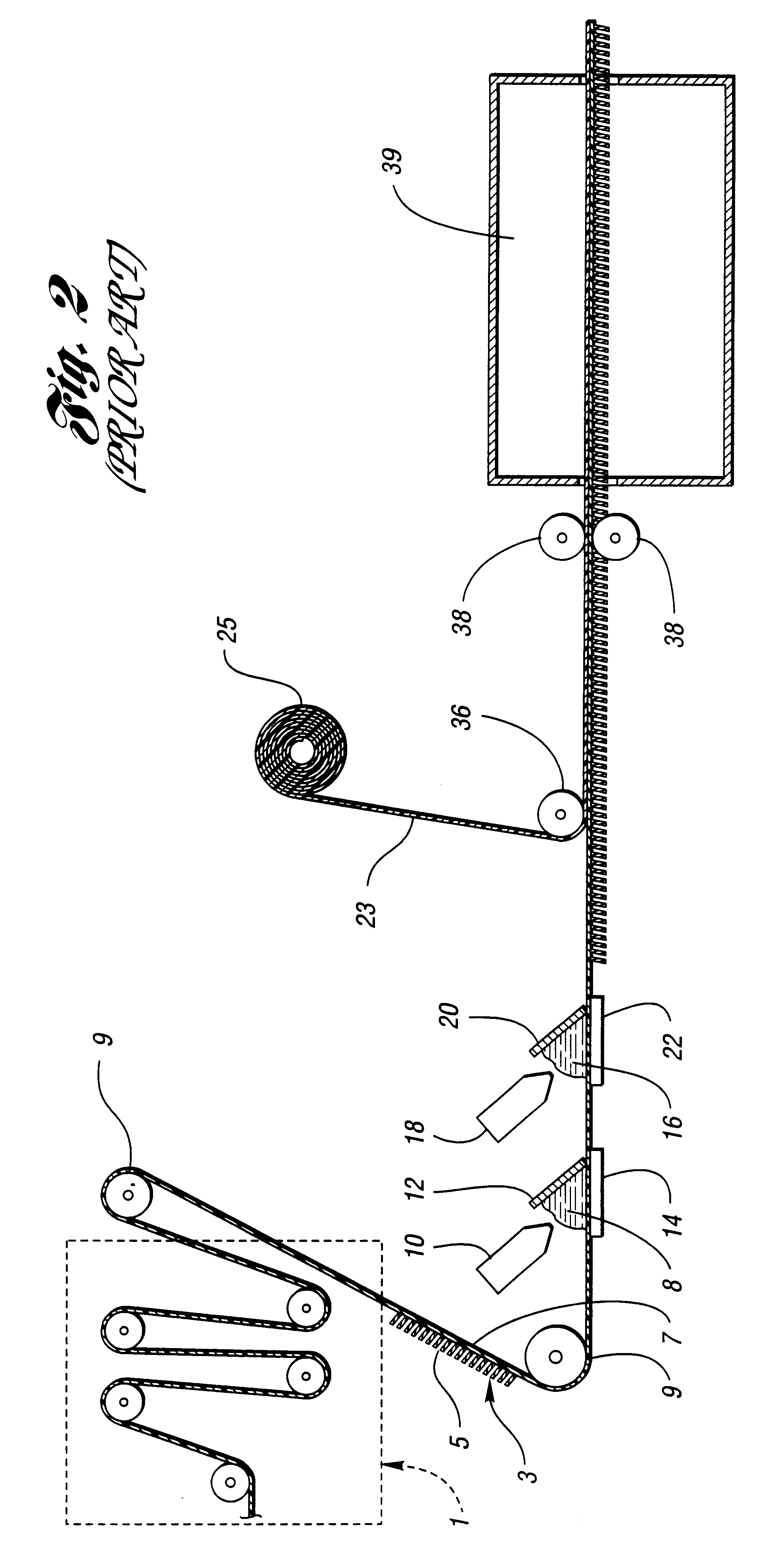Urethane adhesive-laminated carpeting
a technology of adhesives and carpeting, applied in the field of carpet manufacture, can solve the problems of less durable sbr latexes, less durable sbr polymers, and energy-intensiv
- Summary
- Abstract
- Description
- Claims
- Application Information
AI Technical Summary
Problems solved by technology
Method used
Image
Examples
example 2
Example 1 was repeated, but the system formulation was applied at 46 oz / yd.sup.2 (1.5 Kg / M.sup.2)
example 3
In this subject invention example, the polyurethane adhesive was formulated as follows:
B-Side:
91 parts Atlantis Q1000
9 parts diethylene glycol
90 parts aluminum hydroxide
1.6 parts LC 5615 catalyst
A-Side:
59.6 parts Baytuft 751
In this case, a skip coat consisting of 95.6 parts of a 6000 Da mw (number average) polyoxypropylene / polyoxy-ethylene copolymer triol with total oxyethylene content of 20%, 2.0 parts dimethyltin dilaurate catalyst, and 2.4 parts triethylenediamine catalyst was applied to the secondary backing, 11 pic polypropylene, at 0.9 oz / yd.sup.2 (30 g / m.sup.2). The precoat adhesive was applied as a froth to the greige good at 36.4 oz / yd.sup.2 (1.2 Kg / m.sup.2). The index of the adhesive was 1.05. Results are presented in Table 1.
example 4
Example 3 was repeated at an index of 110, and applied weights of 33.0 oz / yd.sup.2 (1.1 Kg / m.sup.2) and 0.28 oz / yd.sup.2 (9.3 g / m.sup.2) for the adhesive and skip coat, respectfully. Results are presented in Table 1.
PUM
| Property | Measurement | Unit |
|---|---|---|
| Linear density | aaaaa | aaaaa |
| Mass | aaaaa | aaaaa |
| Length | aaaaa | aaaaa |
Abstract
Description
Claims
Application Information
 Login to View More
Login to View More - R&D
- Intellectual Property
- Life Sciences
- Materials
- Tech Scout
- Unparalleled Data Quality
- Higher Quality Content
- 60% Fewer Hallucinations
Browse by: Latest US Patents, China's latest patents, Technical Efficacy Thesaurus, Application Domain, Technology Topic, Popular Technical Reports.
© 2025 PatSnap. All rights reserved.Legal|Privacy policy|Modern Slavery Act Transparency Statement|Sitemap|About US| Contact US: help@patsnap.com



